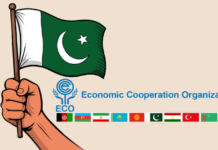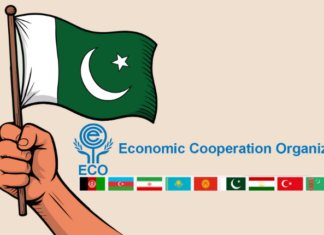Talk to any economic analyst and you will hear that a major long-term issue facing Pakistan’s economy is external sector instability. This instability, the argument goes, is caused by rising economic growth which leads to greater imports, leading to a widening of the current account deficit, which leads to a drawdown in foreign exchange reserves, increasing levels of external debt, and weakening of the rupee. As these imbalances grow, policymakers are forced to decelerate the economy and implement an IMF-mandated program to stabilize the economy.
To break this so-called boom-bust cycle, the argument goes, Pakistan must manage its current account deficits and reform its economy to grow exports, such that the country has enough inflow of dollars to pay for its imports. There is no denying that Pakistan needs to grow its exports, but a key point that many miss is that a current account deficit can be sustainably plugged not just by exports, remittances, and debt, but by the inflow of foreign direct investment (FDI) into the economy.
Look at the geoeconomics pivot debate among various segments of society and you will notice that the focus is trade and connectivity. This is all well and good, barring the fact that this conversation is entirely focused on regions with limited export potential, as argued in my previous column. Another key flaw in the debate is the fact that little to no conversation is exploring the reasons why Pakistan is not attracting rising flows of FDI, especially in export-oriented sectors across the economy.
Emerging economies around the world have recognized that FDI flows in export-oriented sectors enhance integration with global supply chains, bring modern managerial and technical capabilities, and improve overall productivity and wages in the broader economy. It is for this reason that rising FDI inflows are a key policy priority for many economies, including India, which has started the process of rolling out production-linked incentives in key export-oriented sectors including electronics and toy manufacturing.
Pakistan’s FDI inflows have been a major concern over the last few years, with annual FDI inflows declining by 11.6 percent from $3.25 billion in 2017 to $2.91 billion in 2021. Meanwhile, FDI inflows in India increased by 44.6 percent from $36.3 billion in 2017 to $52.5 billion in 2021. In addition, a significant proportion of FDI flows in Pakistan are directed is market-seeking not export-promoting, meaning that this investment does not increase the country’s ability to earn foreign exchange.
One could argue that Pakistan has had to deal with various issues in the last few years, key among them a devastating war on terror and major power shortages, meaning that foreign investors have not looked at Pakistan in the same way as they perhaps would look at an India. This argument has merit, but things have significantly improved on both the terrorism and power sector fronts over the last few years. What has not improved is the overall business environment, especially as it relates to fundamental economic reforms that create excitement around Pakistan’s economy.
As argued last week, there is significant export potential that Pakistan is failing to tap into at this point in time. Realizing this potential requires the country’s policy framework to create an enabling environment for foreign investors. This framework should improve ease of doing business, provide targeted benefits to foreign investors in key export-oriented sectors including labor intensive sectors such as seafood and agriculture, and provide turnkey solutions to minimize red tape across the economy. Given the fact that much of these issues will require reforms from provincial governments, the federal government must create an effective mechanism through which it collaborates with provincial stakeholders. Finally, none of these policies will succeed if the country is unable to provide reliable access to key inputs at competitive rates, especially electricity and water. It is therefore vital that Pakistan aggressively pursue energy market reforms.
The geoeconomics pivot is a major shift in Pakistan’s outlook. Succeeding at this pivot will require a lot of effort and time. However, incremental steps that attract foreign investors in export-oriented sectors can birth a virtuous cycle that accelerates momentum for this pivot. To catalyze such a cycle, policymakers must focus on one or two high-potential sectors at a time and seek FDI from major global companies. Successful models can then be replicated for other sectors and a positive experience for an initial set of investors will incentivize and attract others to invest in the economy.
None of this will succeed without consensus and continued focus across governments and political parties. This lack of consensus has historically undermined Pakistan’s economic potential and it is time that policymakers come together to agree upon a core set of non-negotiable priorities. Only then can the geoeconomics pivot, supported by export oriented FDI, succeed.
























Excellent article having three best takeaways for the policy makers:
1. A clear divide between market seeking FDI and country’s ability to earn foreign exchange is required and one can easily learn a lesson from the FDI trend of 2008.
2. Collaboration between the provincial and Federal government is needed for grabbing the FDI.
3. It is important to start from a couple of key sectors and that can be replicated later for other sectors.
Lol india is also not attracting FDI. WE got $38B in FDI in 2007 also. and we get only 40-50B usd in FDI each year that too is in service sector only and only 5 states in India get 90% of all FDI inflows. Other 25 states like UP, Bihar, west Bengal, assam, rajadthan, MP, chattisgarh, jharkhand, Kerala, odisha dont get enough FDI. These states get less FDI than Pakistan. India also is not getting any FDI in export oriented sectors like textiles, electronics. So india’s condition is even worse than Pakistan. If u see FDI to GDP ratio in India it has been consistently going downhill. India is not getting any FDI into manufacturing sector.
Pakistan is not even getting in any state. If this makes you sleep peacefully, let it be. How is India doing worse than Pakistan?
Lol I want whole south Asia to do better and be on par with east Asian economies like china, south Korea, Japan, hong Kong, taiwan.
I was saying that by reading uzairs article on FDI in India many would think that OMG India gets record FDI but reality is that we also get 90% of FDI in services sector and not export oriented manufacturing sectors like electronics, textile and high tech manufacturing sector.any states in India like UP, Bihar, west Bengal, assam, Rajasthan, Madhya pradesh, Punjab, uttarakhand get less FDI than pakistan. So it isn’t like all good in India also. Also u need to see FDI to GDP ratio
In India it is declining since 2011. So almost 90% India is worse than pakistan. Only 2,3 southern states which have cities like mumbai, pune, bangaluru, chennai, kochi, coimbatore, vizag, hyderabad etc are keeping India afloat.
Pakistan can easily get huge FDI. just focus on coastal cities. In fact it is much easier for pakistan to get FDI than India. If u see your geography all major cities of pakistan can be connected by one expresdway for seamless transportation. Cities like karachi, lahore, islamabad can become huge FDI magnets.
Don’t compare with India man. Compare with Brazil. India is behind Brazil also in FDI sector. Brazil which has 1/6th of india’s population gets more than $70B in FDI. India is also not getting any FDI in labour intensive sectors. Indian exports r STAGNANT at $300-$330B from 2011. India is in much worse condition than Pakistan my friend.
Mate do your research properly.
Lol I have done my research and the stats are true.
Nice information shared but if we talk about india, india is not getting FDI to industrial sector and textile sector. so we should compare india Pakistan
Between FDI and Export … every sane economist would recommend increasing Export as ONLY solution for reducing, controlling or eliminating CAD or making CA surplus.
FDI is not solution for CAD. In fact, FDI can increase CAD as profit gets repatriated and FDI itself can also get repatriated at time when country faces worst economic situation. FDI can also make country vulnerable & dependent on foreign investors.
FDI is only good if it has element of technology and knowhow transfer.
For Pakistan, best solution is to educate workforce, eliminate corruption (draconian law needed), bring business friendly environment, introduce tax on agricultural income like any income, build infrastructure, provide good roads and other amenities so that healthy working environment is created And than increase production of exportable gòods in huge quantity, find market and export.
Export increases job opportunities, give confidence to economic sector and bring healthy foreign exchange in country.
For economically progressing country, export should be always more than import, without Ifs and Buts.